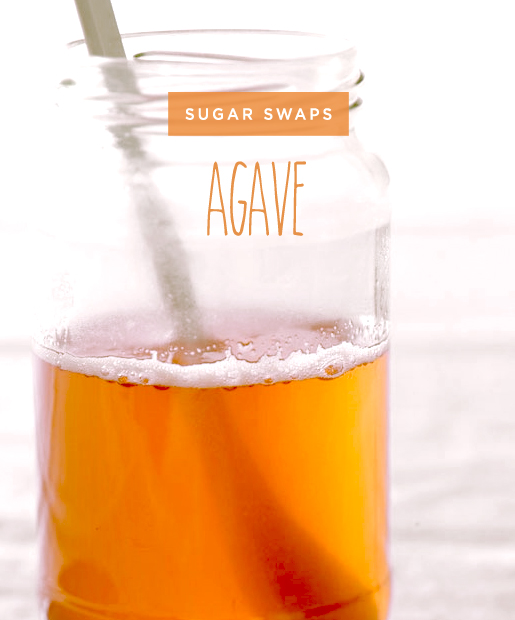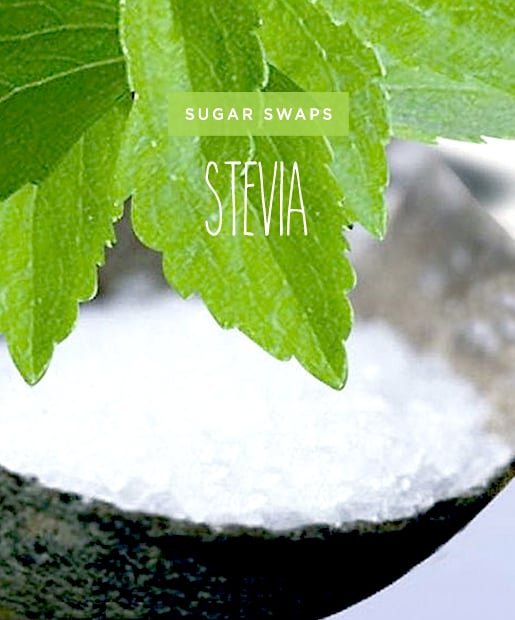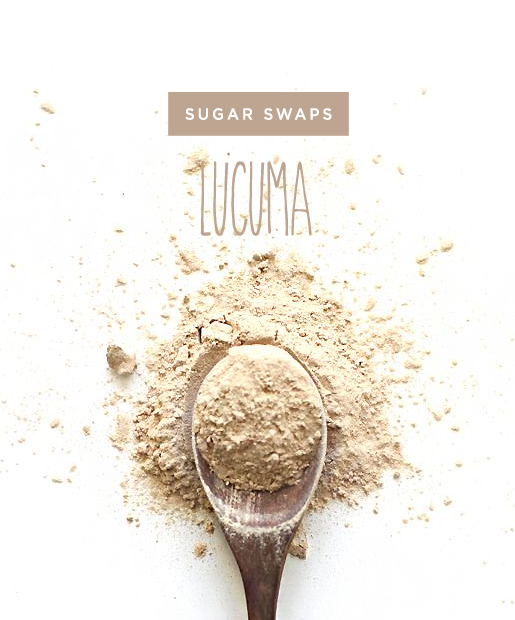A new study found that eating high-glycemic foods (think: white bread, potatoes, and corn syrup) can trigger cravings and tweak the parts of your brain linked to addiction, according to a research team led by David Ludwig, MD, PhD, director of the New Balance Foundation Obesity Prevention Center.
In the study, 12 overweight men were given two different milkshakes: one sweetened with high-glycemic index carbs (which are digested quickly), and another with low-glycemic index carbs.
The men who drank the high-glycemic milkshake experienced a sharp crash in their blood sugar levels and were more likely to overeat at their next meal. Translation: you may end up over-eating when you "treat" yourself to sugar-y snacks. And here's the mind-blower: researchers noticed that the rapid drop in blood sugar lit up the region of the brain connected to addictive behaviors. This gives credence to the idea that we can develop an actual addiction to sugar-laden foods.
So, let's take a look at sugar substitutes with a lower-glycemic index. No, we're not talking about Splenda -- there are plenty of sugar substitutes derived from plants. These low-glycemic sweeteners aren't necessarily lower in calories (although some have zero), what's important is the type of calorie when you're consuming carbs. Just like you might trade white bread in for whole grain, think about swapping out the over-processed, empty calorie high-glycemic sweeteners for the low-glycemic and less-processed counterparts.
Although exact glycemic ratings in food are difficult to determine (there are so many variables, like freshness and serving size), here's how the glycemic index (GI) breaks down: low-glycemic have a GI of <55; moderate-glycemic foods have a GI of 56-69; high-glycemic foods have a GI of >70 . White table sugar has a GI of 80 and high fructose corn syrup registers at 87.
In the study, 12 overweight men were given two different milkshakes: one sweetened with high-glycemic index carbs (which are digested quickly), and another with low-glycemic index carbs.
The men who drank the high-glycemic milkshake experienced a sharp crash in their blood sugar levels and were more likely to overeat at their next meal. Translation: you may end up over-eating when you "treat" yourself to sugar-y snacks. And here's the mind-blower: researchers noticed that the rapid drop in blood sugar lit up the region of the brain connected to addictive behaviors. This gives credence to the idea that we can develop an actual addiction to sugar-laden foods.
So, let's take a look at sugar substitutes with a lower-glycemic index. No, we're not talking about Splenda -- there are plenty of sugar substitutes derived from plants. These low-glycemic sweeteners aren't necessarily lower in calories (although some have zero), what's important is the type of calorie when you're consuming carbs. Just like you might trade white bread in for whole grain, think about swapping out the over-processed, empty calorie high-glycemic sweeteners for the low-glycemic and less-processed counterparts.
Although exact glycemic ratings in food are difficult to determine (there are so many variables, like freshness and serving size), here's how the glycemic index (GI) breaks down: low-glycemic have a GI of <55; moderate-glycemic foods have a GI of 56-69; high-glycemic foods have a GI of >70 . White table sugar has a GI of 80 and high fructose corn syrup registers at 87.
Coconut is making a comeback in a big way. Its sweet cousin, coconut palm sugar, is evaporated sap from coconut trees. It has a low-glycemic index compared to regular sugar, although it has the same number of calories. But coconut sugar offers an added wallop of micronutrients -- it is rich in magnesium, potassium, zinc, and B vitamins.
Form: Powder
Use: Baking, sweetening coffee, tea, or smoothies. Palm sugar is probably the closest to table sugar out of these alternatives, so you can add it to anything.
Glycemic Index: 35
Form: Powder
Use: Baking, sweetening coffee, tea, or smoothies. Palm sugar is probably the closest to table sugar out of these alternatives, so you can add it to anything.
Glycemic Index: 35
Agave syrup is made from the sap of a cactus plant -- the same sap that is fermented and distilled to make tequila. It has a flavor similar to honey and is 1.5 times sweeter than sugar. Although agave has an extremely low-glycemic index, teaspoon to teaspoon, it is also higher in calories and contains more fructose than sugar.
Forms: Raw syrup, light syrup (less heating, more filtering), and dark syrup (less filtering, leading to a richer maple taste)
Uses: Sweetening tea, coffee, and smoothies, making ice cream, and baking. When baking, be sure to modify the amount of oil you use (because of agave's liquid form) and use 2/3 cup agave per 1 cup sugar.
Glycemic Index: 15
Forms: Raw syrup, light syrup (less heating, more filtering), and dark syrup (less filtering, leading to a richer maple taste)
Uses: Sweetening tea, coffee, and smoothies, making ice cream, and baking. When baking, be sure to modify the amount of oil you use (because of agave's liquid form) and use 2/3 cup agave per 1 cup sugar.
Glycemic Index: 15
Stevia is actually 300 times sweeter than sugar. This herb has been used as a sweetener for centuries in South America, and it's even said to aid digestion. Stevia has zero calories and measures a big fat zero on the glycemic index. However, it does have a slight aftertaste, which may take some getting used to. (No such thing as a free lunch, right?)
Forms: Powder and liquid extract
Uses: Sweeten your coffee, tea, and smoothies. You can use it for baking, but you need to make adjustments for the lack of moisture and bulk (since you would use a smaller quantity of stevia than sugar to get the same amount of sweet taste). 1 cup of sugar equals 24 packets of powdered stevia, or 2 1/2 teaspoons of stevia liquid. If baking with stevia, it's best to use a recipe that's actually intended to use the stevia substitute rather than regular sugar.
Glycemic Index: 0
Forms: Powder and liquid extract
Uses: Sweeten your coffee, tea, and smoothies. You can use it for baking, but you need to make adjustments for the lack of moisture and bulk (since you would use a smaller quantity of stevia than sugar to get the same amount of sweet taste). 1 cup of sugar equals 24 packets of powdered stevia, or 2 1/2 teaspoons of stevia liquid. If baking with stevia, it's best to use a recipe that's actually intended to use the stevia substitute rather than regular sugar.
Glycemic Index: 0
Lucuma powder is made from the Peruvian lucuma fruit (also called "eggfruit"), and is rich in minerals such as iron, zinc, potassium, calcium, magnesium, vitamin B3, beta carotene, and fiber. One tablespoon of white sugar contains 14 g of sugar calories, while one tablespoon of lucuma only contains 2 grams (although it still has 60 calories overall). The powder tastes a bit like maple syrup.
Form: Powder
Uses: Sweeten beverages, smoothies, and cereal or yogurt. You can also substitute it directly (1:1 ratio to sugar) in baking recipes, especially if brown sugar is called for.
Glycemic Index: 25
Form: Powder
Uses: Sweeten beverages, smoothies, and cereal or yogurt. You can also substitute it directly (1:1 ratio to sugar) in baking recipes, especially if brown sugar is called for.
Glycemic Index: 25






